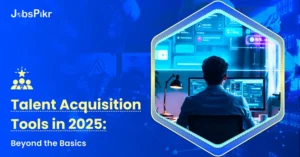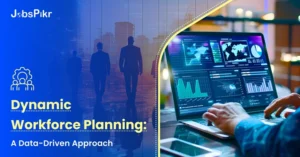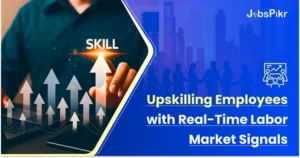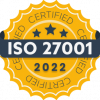- **TL;DR**
- Why Talent Acquisition Tools Matter More Than Ever in 2025
- Supercharge Your Talent Stack with Live Market Intelligence
- What Are Talent Acquisition Tools (And Why the Basics Aren’t Enough Anymore)?
- How Are AI Tools Changing Talent Acquisition in 2025?
- What Are the Best Talent Acquisition Automation Tools in 2025?
- Why Real-Time Talent Insights Are the New Competitive Edge
- How JobsPikr Powers Next-Gen Talent Acquisition Platforms
- How to Choose the Right Talent Acquisition Tools for Your Organization
- The Future of Talent Acquisition Tools: What’s Coming Next
- Intelligence Is What Sets the Best Teams Apart
- Supercharge Your Talent Stack with Live Market Intelligence
-
FAQs
- 1. What are the best talent acquisition tools for 2025?
- 2. How do AI tools for talent acquisition improve hiring outcomes?
- 3. How does job market data support talent insights?
- 4. What’s the difference between ATS platforms and modern talent acquisition tools?
- 5. How can JobsPikr data be used with recruitment software?
**TL;DR**
Recruiting in 2025 isn’t about posting jobs and waiting for resumes. It’s about reading market signals fast, spotting shifts before your competitors, and building hiring strategies around real-time talent insights. The new wave of talent acquisition tools doesn’t just automate tasks — it changes how teams plan, hire, and scale.
Takeaways:
- The basics (ATS, job boards) no longer cut it.
- Speed and visibility into the talent market decide who hires best.
- Tools that blend automation with market intelligence are setting the new standard
Why Talent Acquisition Tools Matter More Than Ever in 2025
If you ask any TA leader what’s changed the most in the last two years, they’ll probably say this: hiring moves faster than it used to, and staying ahead of the market is getting harder.
The old rhythm of recruitment, quarterly headcount plans, steady application flow, and predictable competition doesn’t exist anymore. Roles open and close in weeks, sometimes days. Top candidates get multiple offers at once. Skill demands shift almost overnight. And if your team can’t see those shifts coming, you lose.
This is why talent acquisition tools have quietly become the backbone of modern recruiting teams. Not the shiny “future of work” stuff — the practical, everyday stack that helps teams find the right people at the right time.
According to Social Talent, 76% of employers globally reported difficulty filling roles, and nearly three out of four are increasing their tech investments to keep up. Not because they want more software, but because they need better visibility.
Here’s the reality:
- Your ATS logs applicants, but it doesn’t tell you where the talent is moving.
- Job boards show what’s open, but not what’s about to change.
- Recruiters are competing against companies they’ve never met, in markets they’ve never operated in.
Talent acquisition tools in 2025 solve for that visibility gap. They surface signals from the job market early, automate what slows hiring down, and give teams a clear view of where to aim next. It’s less about being first to post a job and more about being first to see the opportunity.
Supercharge Your Talent Stack with Live Market Intelligence
Stop reacting to hiring trends after they happen. Spot shifts early, plan smarter, and give your team a real competitive edge.
What Are Talent Acquisition Tools (And Why the Basics Aren’t Enough Anymore)?
A few years ago, if you had a decent ATS, a couple of job boards, and a scheduling tool, you were set. That stack worked when hiring was more predictable and the competition sat mostly in your own backyard.
That’s not how it works anymore.
Today, hiring teams are competing across time zones, industries, and skill clusters that didn’t even exist five years ago. A new role goes live in Berlin, and a company in Bangalore is sourcing for the same candidate within hours. The market moves too fast for basic tools to keep up.
Talent acquisition tools still cover the familiar ground: sourcing, screening, tracking, and scheduling. But the ones actually driving results now do something extra. They help teams read market signals in real time, not just manage the workflow after the fact.
Here’s the difference:
- Basic stack: You post a job, wait for applicants, and push them through a pipeline.
- Modern stack: You see where talent demand is shifting, adjust your strategy early, and target the right pool before everyone else.
This is also why so many recruiting teams are layering talent insights and job market data into their toolset. It’s not a “nice-to-have dashboard” anymore; it’s what lets you build a realistic hiring plan instead of a hopeful one.
The tools themselves vary a lot. Some are built on top of traditional ATS systems, others run as intelligence layers that sit across sourcing and outreach. But the goal is the same: shorten the distance between market signal and recruiter action.
TA Tool Buyer’s Guide 2025: Building a Smarter Recruiting Stack
How Are AI Tools Changing Talent Acquisition in 2025?
AI isn’t a big headline in recruiting anymore. It’s just part of how teams work. Most recruiters don’t even call it out; they use it quietly every day to save time and stay ahead.
The most obvious impact is on the boring stuff. Sorting through applications, finding candidate contact details, and personalizing outreach, those tasks used to eat up hours. Now they’re mostly automated. That means recruiters can spend more time doing the part that actually matters: talking to people.
But there’s another layer to it. The better AI tools don’t just automate; they give recruiters a clearer view of where the market is shifting. If you’re hiring for a niche skill, a good platform can show you where that talent is concentrated and how demand is changing. It’s not about replacing judgment. It’s about making it easier to act on real information, fast.
This works best when the AI is connected to near-real-time job market data. Without that, it’s just moving faster in the wrong direction. With the right data feeding it, you can see skills heating up in a region before your competitors do, and adjust your strategy early.
That’s why the best hiring teams aren’t just buying tools, they’re building stacks where AI and market signals work together.
What Are the Best Talent Acquisition Automation Tools in 2025?
Automation isn’t about replacing recruiters. It’s about cutting down the friction between “we need to hire” and “we just did.” The best tools don’t try to do everything. They quietly make each step faster and smarter.
They generally fall into four buckets.
1. Programmatic advertising tools
These push openings to the right places without endless manual posting. They shift budget in real time, double down where quality candidates come from, and help teams reach niche audiences faster.
2. AI-based sourcing and talent intelligence platforms

This is where sourcing gets sharper. Instead of cold searching or relying on static lists, modern sourcing tools build dynamic candidate pools based on live skill demand, geography, and hiring velocity.
This is also where talent intelligence platforms like JobsPikr fit in. While sourcing tools handle candidate discovery, JobsPikr feeds them with real-time job market data—what skills are spiking, where roles are moving, and how hiring patterns are shifting across markets. It’s what turns “we think this is a good market to hire from” into “we know.”
3. Interview scheduling and workflow automation
Scheduling eats up more time than most teams like to admit. Automation tools handle that without a single back-and-forth email. They sync calendars, offer candidates smart slots, and keep pipelines moving without manual chasing.
4. Talent CRMs and engagement layers
Once the right people are in the funnel, keeping them engaged matters. CRMs built for recruiting manage follow-ups, outreach, and reminders, making sure good candidates don’t go cold.
None of these buckets stands alone. The strongest TA teams are layering them—sourcing flows into scheduling, scheduling feeds engagement, and the intelligence layer quietly informs everything upstream.
Why Real-Time Talent Insights Are the New Competitive Edge
Most recruiting teams have tools. What separates the ones who hire fast from the ones who keep playing catch-up is how well they can read the market.
Here’s the thing about talent data: by the time a quarterly report lands on your desk, the ground has already shifted. Skills that looked scarce last quarter are everywhere now. Regions that seemed quiet are suddenly crowded with demand. The best candidates don’t wait around for slow teams to react.
That’s where real-time talent insights change the game.
Instead of reacting to what happened, TA teams can see what’s happening right now: where hiring spikes are forming, which roles are heating up, and how the competition is moving. That allows them to make smarter calls early:
- Open roles where the talent actually is.
- Adjust comp bands before offers start slipping.
- Shift sourcing strategies while the market window is still open.
Think of it as the difference between driving by a map and driving with live traffic updates. The first gets you there eventually. The second helps you avoid the jam.
This is also where tools like JobsPikr earn their keep. Instead of just tracking your pipeline, they feed your team a live stream of job market activity. You can see which skills are trending by region, how hiring volumes are moving, and where competition is tightening.
That kind of signal gives recruiters something most teams don’t have: lead time. And in a market where the best talent is off the shelf in weeks, lead time is everything.
TA Tool Buyer’s Guide 2025: Building a Smarter Recruiting Stack
How JobsPikr Powers Next-Gen Talent Acquisition Platforms
Most talent acquisition stacks today look the same: an ATS, a sourcing tool, a scheduling layer, and maybe some analytics stitched together. It works, but only as fast as the data flowing through it.
What makes a stack truly powerful isn’t how many tools you have. It’s whether those tools are looking at the right signals. That’s the gap JobsPikr fills.
Instead of working in the background, guessing where the market is moving, JobsPikr brings live job market intelligence into the recruiting stack. Think of it as the layer that tells your other tools where to aim.
Here’s how it fits in practice:
- For sourcing teams: Instead of pulling static candidate lists, they can see where hiring demand is spiking and target the right markets early.
- For workforce planning: Instead of relying on outdated benchmarks, they get fresh skill and role trends to plan around actual demand.
- For recruiters: Instead of competing blind, they can adjust outreach, compensation, and timelines with real context.
- For leadership: Instead of gut-feel forecasting, they can make hiring decisions backed by market reality.
JobsPikr doesn’t replace the sourcing or automation tools teams already use. It makes them sharper. The same way good data turns a search engine into a recommendation engine, real-time job signals turn recruiting software into a competitive edge.
When your stack knows what’s coming before the rest of the market does, everything downstream moves smoothly, your sourcing becomes targeted, your outreach faster, and your time-to-fill shorter.
How to Choose the Right Talent Acquisition Tools for Your Organization
There’s no shortage of shiny recruiting tech right now. Every other tool claims to be “AI-powered” or “end-to-end.” But in practice, no single platform does it all well. Choosing the right stack isn’t about chasing trends. It’s about knowing what your team actually needs to move faster.

Image Source: joingenius
Here are a few filters that matter more than the feature list.
1. Fit with your existing stack
The best tools are the ones that slot in without forcing your team to change everything overnight. If you already use an ATS or CRM, look for products that integrate cleanly instead of adding another disconnected dashboard. A good tool should make your current system smarter, not heavier.
2. Real-time visibility
Recruiting gets messy when teams are making decisions on stale data. If the platform doesn’t give you live signals on hiring trends, talent supply, or role movement, it’s already behind. That’s what separates tools that just track candidates from those that actually guide strategy.
3. Flexibility as hiring priorities shift
Your hiring plan today won’t look the same six months from now. The best tools flex with you, new markets, new roles, new channels. If a platform locks you into a fixed workflow, it’ll start slowing you down the moment the market changes.
4. Depth of data, not just dashboards
A slick interface doesn’t mean much if the signals underneath aren’t strong. Tools that rely on surface-level job boards or static datasets can’t give you a real edge. This is where layering in a live talent intelligence feed like JobsPikr makes a difference. It gives your stack something most teams don’t have: foresight.
5. Clear ROI
Good tools earn their place. They should cut time-to-hire, improve targeting, or help you plan smarter. If a platform can’t show a clear impact, it’s just more software to manage.
Choosing well isn’t about picking the biggest brand name. It’s about building a stack that gets you ahead of the market instead of reacting to it.
The Future of Talent Acquisition Tools: What’s Coming Next
If the last few years were about automating recruiting tasks, the next few are going to be about anticipating them. The tools that will actually matter won’t just make hiring faster—they’ll make it smarter and earlier.
From automation to prediction
Automation solves for what’s already on your plate. Prediction gives you a head start. Instead of opening a role and then figuring out where to find people, teams will have clear signals on where talent is moving weeks before they need to act. Hiring won’t start with a job description anymore. It’ll start with market intelligence.
Skills, not titles, will lead strategy
Titles are changing too fast to anchor hiring around them. Skills are more stable, and they reveal how roles are evolving beneath the surface. Future TA tools will rely less on job labels and more on skill-level signals—who has them, where they’re emerging, and how demand is shifting.
AI will become the silent layer, not the headline
In 2025, AI is still being marketed as a big differentiator. A few years from now, it’ll just be part of the plumbing—quietly routing, scoring, and surfacing signals in the background. The real differentiator won’t be “who has AI.” It’ll be who has the better data feeding it.
Intelligence will be the center of the stack
The smartest recruiting teams won’t be the ones with the most tools. They’ll be the ones with the best signal. Whether it’s workforce planning, sourcing, or comp strategy—everything will hinge on knowing what the market is doing right now, not months after the fact.
This is exactly where platforms like JobsPikr come in. It doesn’t replace your recruiting stack—it makes the entire thing sharper. It’s the radar that lets you act before everyone else sees the storm.
Intelligence Is What Sets the Best Teams Apart
Recruiting tech will keep evolving, but the edge won’t come from having more tools. It’ll come from knowing how to use them with sharper, faster, market-level insight. Talent teams that build their stack around real-time intelligence will plan better, hire faster, and compete on strategy, not just speed.
The teams that see the market first move first.
Supercharge Your Talent Stack with Live Market Intelligence
Stop reacting to hiring trends after they happen. Spot shifts early, plan smarter, and give your team a real competitive edge.
FAQs
1. What are the best talent acquisition tools for 2025?
There isn’t one “best” tool. What works is a mix of tools that solve different problems well—an ATS that keeps the pipeline clean, sourcing tools that don’t slow you down, something solid for scheduling, and a layer that shows what’s happening in the market. The best stacks are the ones that make recruiting less messy, not more complicated.
2. How do AI tools for talent acquisition improve hiring outcomes?
They take care of the busywork. Things like sorting resumes, checking calendars, or setting reminders don’t need a recruiter’s brain. When that’s off your plate, you get more time to talk to the right people and move on good candidates fast. That’s where the real difference shows up.
3. How does job market data support talent insights?
Most teams plan hiring based on what’s already happened. Market data flips that. It shows where roles are opening, which skills are heating up, and where the competition is moving. It’s the difference between guessing and knowing where to look.
4. What’s the difference between ATS platforms and modern talent acquisition tools?
An ATS helps you keep track of people once they’re already in your funnel. Modern tools help you find them before everyone else does. One manages; the other gives you an edge.
5. How can JobsPikr data be used with recruitment software?
JobsPikr sits underneath whatever tools you’re already using. It feeds them live signals about the job market, so every search or campaign is built on what’s happening right now—not what happened months ago. It makes your stack smarter without forcing you to rebuild it.




